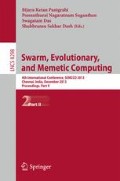Abstract
In a steelmaking shop, the output ‘yield’ is considered as an important performance measure while producing a specific amount of steel. It represents the operational efficiency of the steelmaking shop. It is the objective of management to maintain a high percentage of the yield. The present study was performed considering the open-hearth process of a steelmaking shop. The best subset regression analysis is applied to determine the most influencing variables influencing the output of the steelmaking process. Then, the multi-layer feed forward neural network with Levenberg-Marquardt (L-M) backpropagation algorithm is presented to predict the output yield of steel. In the present investigation, 0.0001 of MSE is set as a goal of the network training. The overtraining is given cognizance during the model building. The overall average of absolute percentage error (APE) of the model is found to be 0.5145% and the predicted yield based on the neural network is found to be in good agreement with the testing data set.
Access this chapter
Tax calculation will be finalised at checkout
Purchases are for personal use only
Preview
Unable to display preview. Download preview PDF.
References
Bezerra, E.M., Ancelotti, A.C., Pardini, L.C., Rocco, J.A.F.F., Iha, K., Ribeiro, C.H.C.: Artificial neural networks applied to epoxy composites reinforced with carbon and E-glass fibers: Analysis of the shear mechanical properties. Materials Science and Engineering A 464, 177–185 (2007)
Couderier, L., Hopkins, L., Wilkomirsky, I.: Fundamentals of metallurgical processes. Paragon Press (1978)
Falkus, J., Pietrzkiewicz, P., Pietrzyk, W., Kusiak, J.: Artificial neural network predictive system for oxygen steelmaking converter. In: Neural Networks and Soft Computing, pp. 825–830. Springer (2003)
Gresovnik, I., Kodelja, T., Vertnik, R., Sarler, B.: Application of artificial neural networks to improve steel production process. In: Proceedings of the IASTED International Conference on Artificial Intelligence and Soft Computing, pp. 249–255 (2012)
Hagan, M.T., Menhaj, M.B.: Training feedforward networks with the Marquardt algorithm. IEEE Transactions on Neural Networks 5, 989–993 (1994)
Jalali-Heravi, M., Asadollahi-Baboli, M., Shahbazikhah, P.: QSAR study of heparanase inhibitors activity using artificial neural networks and Levenberg-Marquardt algorithm. European Journal of Medicinal Chemistry 43, 548–556 (2008)
Karnik, S.R., Gaitonde, V.N., Campos Rubio, J., Esteves Correia, A., Abrão, A.M., Paulo Davim, J.: Delamination analysis in high speed drilling of carbon fiber reinforced plastics (CFRP) using artificial neural network model. Materials and Design 29, 1768–1776 (2008)
Mazumdar, D., Evans, J.W.: Modeling of steelmaking processes. CRC Press (2009)
Monteiro, L.V., Sant’Anna, A.M.O.: Application of Neural network for modeling steelmaking process. Congrso Latino-lberoameroamericano de investigacion Oprative, 1618–1627 (2012)
Mukherjee, I., Routroy, S.: Comparing the performance of neural networks developed by using Levenberg-Marquardt and Quasi-Newton with the gradient descent algorithm for modelling a multiple response grinding process. Expert Systems with Applications 39, 2397–2407 (2012)
Pal, M., Pal, S.K., Samantaray, A.K.: Artificial neural network modeling of weld joint strength prediction of a pulsed metal inert gas welding process using arc signals. Journal of Materials Processing Technology 202, 464–474 (2008)
Rencher, A.C., Pun, F.C.: Inflation of R2 in best subset regression. Technimetrics 22, 49–53 (1980)
Shukla, A.K., Deo, B.: Mathematical modeling of phosphorus prediction in BOF steelmaking process: A fundamental approach to produce low phosphorus steels and ensure direct tap practices. In: International Conference on Metal and Alloys, METALL 2007 (2007)
Tsai, M.J., Li, C.H., Chen, C.C.: Optimal laser-cutting parameters for QFN packages by utilizing artificial neural networks and genetic algorithm. Journal of Materials Processing Technology 208, 270–283 (2008)
Author information
Authors and Affiliations
Editor information
Editors and Affiliations
Rights and permissions
Copyright information
© 2013 Springer International Publishing Switzerland
About this paper
Cite this paper
Laha, D. (2013). ANN Modeling of a Steelmaking Process. In: Panigrahi, B.K., Suganthan, P.N., Das, S., Dash, S.S. (eds) Swarm, Evolutionary, and Memetic Computing. SEMCCO 2013. Lecture Notes in Computer Science, vol 8298. Springer, Cham. https://doi.org/10.1007/978-3-319-03756-1_28
Download citation
DOI: https://doi.org/10.1007/978-3-319-03756-1_28
Publisher Name: Springer, Cham
Print ISBN: 978-3-319-03755-4
Online ISBN: 978-3-319-03756-1
eBook Packages: Computer ScienceComputer Science (R0)

